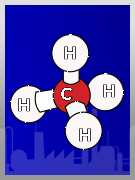ISO VG 68 Oil, AGMA 2, SAE 20 Oil
Select a product category below
-
![ISO VG 68 | Hydraulic Oil | Anti-Wear (AW)]()
ISO VG 68 | Hydraulic Oil | Anti-Wear (AW) -
![ISO VG 68 | Hydraulic Oil | Cold Weather]()
ISO VG 68 | Hydraulic Oil | Cold Weather -
![ISO VG 68 | Hydraulic Oil | Bio-Degradable]()
ISO VG 68 | Hydraulic Oil | Bio-Degradable -
![ISO VG 32 | Hydraulic Oil | Marine EAL]()
ISO VG 32 | Hydraulic Oil | Marine EAL -
![ISO VG 68 | Hydraulic Oil | Food Grade]()
ISO VG 68 | Hydraulic Oil | Food Grade -
![ISO VG 68 | Rust & Oxidation Oil | Mineral Base]()
ISO VG 68 | Rust & Oxidation Oil | Mineral Base -
![ISO VG 68 | Rust & Oxidation Oils | Synthetic]()
ISO VG 68 | Rust & Oxidation Oils | Synthetic -
![ISO VG 68 | Rust & Oxidation Oil | Food Grade]()
ISO VG 68 | Rust & Oxidation Oil | Food Grade -
![SAE 20, ISO VG 68 | Non-Detergent Oil]()
SAE 20, ISO VG 68 | Non-Detergent Oil -
![AGMA 2, ISO VG 68 | Gear Lube (Non-EP)]()
AGMA 2, ISO VG 68 | Gear Lube (Non-EP) -
![AGMA 2 EP, ISO VG 68 | Gear Lube (EP)]()
AGMA 2 EP, ISO VG 68 | Gear Lube (EP) -
![AGMA 2 S, ISO VG 68 | Gear Lube | Synthetic]()
AGMA 2 S, ISO VG 68 | Gear Lube | Synthetic -
![AGMA 2 EP, ISO VG 68 | Gear Lube | Synthetic (EP)]()
AGMA 2 EP, ISO VG 68 | Gear Lube | Synthetic (EP) -
![AGMA 2, ISO VG 68 | Gear Lube | Food Grade]()
AGMA 2, ISO VG 68 | Gear Lube | Food Grade -
![ISO VG 68 | Compressor Oil | Mineral Base]()
ISO VG 68 | Compressor Oil | Mineral Base -
![ISO VG 68 | Compressor Oil | Refrigeration]()
ISO VG 68 | Compressor Oil | Refrigeration -
![ISO VG 68 | Compressor Oil | Synthetic PAO Base]()
ISO VG 68 | Compressor Oil | Synthetic PAO Base -
![ISO VG 68 | Compressor Oil | Syn Diester Base]()
ISO VG 68 | Compressor Oil | Syn Diester Base -
![ISO VG 68 | Compressor Oil | Synthetic POE Base]()
ISO VG 68 | Compressor Oil | Synthetic POE Base -
![ISO VG 68 | Slide Way Lubricant]()
ISO VG 68 | Slide Way Lubricant


























